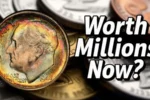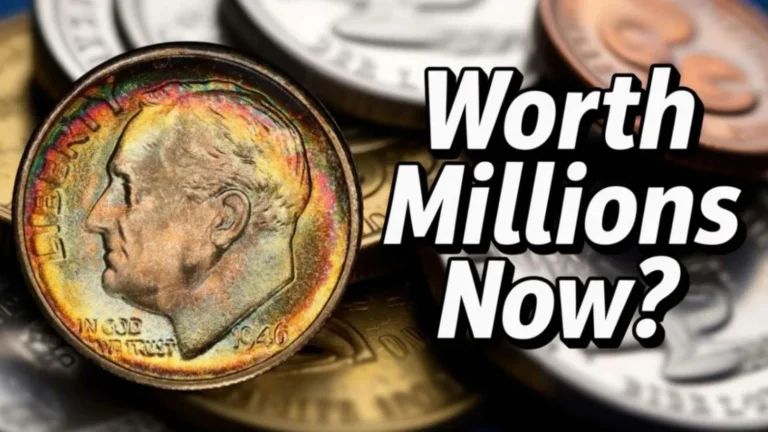The coins that slip through our fingers every day usually don’t get a second glance. But sometimes, tucked inside that handful of change, lies something extraordinary. Few stories capture this better than the 8 Rare Bicentennial Quarters—coins that, on paper, should be worth 25 cents, yet some have fetched jaw-dropping sums, with estimates of the group’s total value running as high as $270 million. That’s not just pocket change—that’s life-changing money.
Let’s dig into what makes these quarters so special, how they came to be, and why they remain one of the most electrifying treasures in the world of coin collecting.
The History of the Bicentennial Quarter
In 1975 and 1976, the U.S. Mint marked America’s 200th birthday with a commemorative quarter unlike any before it. Gone was the standard eagle reverse; in its place, a Colonial drummer, a torch surrounded by 13 stars, and the dual date “1776–1976.”
The government released over 1.6 billion of these coins, meaning nearly every American alive at the time encountered one. They jingled in lunch lines, toll booths, and soda machines. For most, it was just another quarter—distinctive, yes, but still everyday money. Hidden among those billions, though, were a few anomalies. These oddballs would later become legends: the 8 Rare Bicentennial Quarters.
Why Some Bicentennial Quarters Are Worth Millions
The difference between a 25-cent Bicentennial quarter and one worth six figures comes down to four big factors:
| Factor | Why It Matters | Examples |
|---|---|---|
| Minting Errors | One-of-a-kind mistakes make coins unique. | Double-die strikes, misaligned designs, off-center strikes. |
| Metal Composition | A handful were minted in 40% silver. | Silver proof sets, circulation mix-ins. |
| Proof Strikes | Special collector’s editions with higher detail. | San Francisco–minted “S” proofs. |
| Condition | Mint-state grades fetch far higher prices. | PCGS MS-67 or higher. |
Together, these qualities transform ordinary quarters into some of the most sought-after rarities in U.S. history.
The Thrill of Minting Errors
If you ask seasoned collectors, error coins are the rockstars of the numismatic world. A Bicentennial quarter struck off-center, showing doubled text, or even produced on the wrong metal planchet can fetch tens of thousands of dollars at auction.
Why? Because no two errors are alike. Each misprint is a one-off piece of history, like a mis-signed Picasso. That uniqueness drives fierce bidding wars among collectors chasing bragging rights.
The Silver Bicentennial Quarters
Most of the Bicentennial quarters were standard copper-nickel, but the Mint also produced 40% silver versions for collector sets sold directly to the public. Some of these silver coins, by accident or mishap, slipped into circulation.
They’re easy to spot once you know the tricks:
- Silver coins are heavier than copper-nickel ones.
- They ring with a distinct, higher-pitched “chime” when dropped.
- Many carry the San Francisco “S” mint mark.
If you find one of these in a jar of old coins, congratulations—you might just have one of the 8 rare pieces collectors chase.
How to Check If Your Quarter Is Valuable
Think you might have a winner? Here’s a quick checklist:
- Look for a mint mark: “D” for Denver, “S” for San Francisco, or none (Philadelphia). Silver proofs often carry the “S.”
- Examine condition: Coins without scratches, wear, or fading stand out.
- Inspect for errors: Doubling, misaligned strikes, or missing features are key.
- Weigh it: Silver coins tip the scale slightly higher.
- Get it graded: Professional services like PCGS or NGC can authenticate and certify your coin, which dramatically boosts its value at resale.
Real-Life Discoveries
One of the most thrilling aspects of the Bicentennial quarter craze is how people stumble upon them. Inherited coin albums, jars of pocket change, even bank rolls have revealed treasures worth thousands.
A famous example: a silver Bicentennial quarter graded MS-67 sold for over $19,000 at auction. Another proof error topped $100,000. And because millions of quarters remain tucked away in attics and dresser drawers, the possibility of finding another high-value one is very real.
Why Collectors Keep Coming Back
For coin lovers, the Bicentennial quarter is more than just metal—it’s a tangible slice of America’s 200th birthday party. Its design is patriotic, its circulation history touches nearly every household, and its rare variants carry an air of mystery.
The 8 rarest examples tie all of that together: nostalgia, national pride, scarcity, and, of course, the chance for an unexpected windfall.
Wrapping Up
The Bicentennial quarter is one of those magical quirks of American money—a coin born for celebration, minted in the billions, yet hiding a few gems that can change lives. Most are worth only their face value, but the 8 rare examples remind us that history has a way of sneaking value into unexpected places.
So before you spend that shiny 1976 drummer-boy coin at the vending machine, take a closer look. Because who knows? You might just be holding a fortune in your hand.







